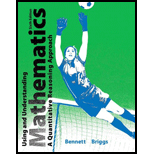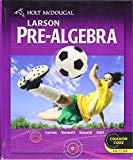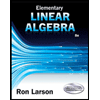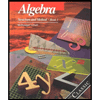
Using and Understanding Mathematics: A Quantitative Reasoning Approach plus NEW MyMathLab with Pearson eText -- Access Card Package (6th Edition) (Bennett Science & Math Titles)
6th Edition
ISBN: 9780321923219
Author: Jeffrey O. Bennett, William L. Briggs
Publisher: PEARSON
expand_more
expand_more
format_list_bulleted
Concept explainers
Textbook Question
Chapter 11.B, Problem 18E
Drawing MATH with Perspective. Make the letters M, A, T, and H in Figure 11.33 into three-dimensional solid letters. The given letters should be used as the front faces of three-dimensional letters as deep as the T is wide, and all letters should be drawn with correct perspective relative to the given vanishing point P.

FIGURE 11.33
Expert Solution & Answer
Want to see the full answer?
Check out a sample textbook solution
Students have asked these similar questions
This table displays the current in equal intervals.
Time t/ms 05
10 15 20 25 30
Current i/A 0 4.8 9.1 12.7 8.8 3.5 0
The formula for the charge as follows:
30x10-3
q
0
i dt
Use formula to solve the current at 30ms using both the trapezoidal rule and Simpson's
rule showing all steps and working
Table displays the current in equal intervals.
Charge formula:
Time t/m 05 10 15
20 25 30
Current i/A 0 4.8 9.1 12.7 8.8 3.5 0
9 =
70
30x10-3
i dt
Using mid-ordinate rule solve for the current at 30ms.
If x 2, prove that, for some constant B,
σo(n)
n5
= B
log x
+0(x-4).
4x4
n≤x
You may assume that
-5
-4
1
Σ₁ = K −x + O(x¯5) and Σ q¯¹ = log x + C + O(x−¹).
AM
-
q≤x
Chapter 11 Solutions
Using and Understanding Mathematics: A Quantitative Reasoning Approach plus NEW MyMathLab with Pearson eText -- Access Card Package (6th Edition) (Bennett Science & Math Titles)
Ch. 11.A - Prob. 1QQCh. 11.A - Prob. 2QQCh. 11.A - Prob. 3QQCh. 11.A - Prob. 4QQCh. 11.A - Prob. 5QQCh. 11.A - Prob. 6QQCh. 11.A - Prob. 7QQCh. 11.A - Prob. 8QQCh. 11.A - Prob. 9QQCh. 11.A - Prob. 10QQ
Ch. 11.A - Prob. 1ECh. 11.A - 2. Define fundamental frequency, harmonic, and...Ch. 11.A - 3. What is a 12-tone scale? How are the...Ch. 11.A - 4. Explain how the notes of the scale are...Ch. 11.A - Prob. 5ECh. 11.A - Prob. 6ECh. 11.A - Prob. 7ECh. 11.A - Prob. 8ECh. 11.A - Prob. 9ECh. 11.A - Prob. 10ECh. 11.A - Prob. 11ECh. 11.A - Prob. 12ECh. 11.A - Octaves. Starting with a tone having a frequency...Ch. 11.A - Notes of a Scale. Find the frequencies of the 12...Ch. 11.A - Prob. 15ECh. 11.A - 16. The Dilemma of Temperament. Start at middle A,...Ch. 11.A - Exponential Growth and Scales. Starting at middle...Ch. 11.A - 18. Exponential Growth and Scales. Starting at...Ch. 11.A - 19. Exponential Decay and Scales. What is the...Ch. 11.A - Prob. 20ECh. 11.A - Prob. 21ECh. 11.A - Prob. 22ECh. 11.A - Mathematics and Music. Visit a website devoted to...Ch. 11.A - Mathematics and Composers. Many musical composers,...Ch. 11.A - Prob. 25ECh. 11.A - Prob. 26ECh. 11.A - Digital Processing. A variety of apps and software...Ch. 11.A - Prob. 28ECh. 11.B - Prob. 1QQCh. 11.B - 2. All lines that are parallel in a real scene...Ch. 11.B - 3. The Last Supper in Figure 11.6. Which of the...Ch. 11.B - Prob. 4QQCh. 11.B - Prob. 5QQCh. 11.B - Prob. 6QQCh. 11.B - Prob. 7QQCh. 11.B - Prob. 8QQCh. 11.B - Prob. 9QQCh. 11.B - Prob. 10QQCh. 11.B - Prob. 1ECh. 11.B - Prob. 2ECh. 11.B - Prob. 3ECh. 11.B - Prob. 4ECh. 11.B - Prob. 5ECh. 11.B - 6. Briefly explain why there are only three...Ch. 11.B - 7. Briefly explain why more tilings are possible...Ch. 11.B - 8. What is the difference between periodic and...Ch. 11.B - Prob. 9ECh. 11.B - Prob. 10ECh. 11.B - Prob. 11ECh. 11.B - Prob. 12ECh. 11.B - Prob. 13ECh. 11.B - Prob. 14ECh. 11.B - Vanishing Points. Consider the simple drawing of a...Ch. 11.B - Correct Perspective. Consider the two boxes shown...Ch. 11.B - Drawing with Perspective. Make the square, circle,...Ch. 11.B - Drawing MATH with Perspective. Make the letters M,...Ch. 11.B - 19. The drawing in Figure 11.34 shows two poles...Ch. 11.B - Two Vanishing Points. Figure 11.35 shows a road...Ch. 11.B - Prob. 21ECh. 11.B - Prob. 22ECh. 11.B - Prob. 23ECh. 11.B - Prob. 24ECh. 11.B - Prob. 25ECh. 11.B - Prob. 26ECh. 11.B - Prob. 27ECh. 11.B - Prob. 28ECh. 11.B - Prob. 29ECh. 11.B - Prob. 30ECh. 11.B - 30-31 : Tilings from Translating and Reflecting...Ch. 11.B - 32-33: Tilings from Quadrilaterals. Make a tiling...Ch. 11.B - Tilings from Quadrilaterals. Make a tiling from...Ch. 11.B - Prob. 34ECh. 11.B - Prob. 35ECh. 11.B - Prob. 36ECh. 11.B - Prob. 37ECh. 11.B - Prob. 38ECh. 11.B - Art and Mathematics. Visit a website devoted to...Ch. 11.B - 40. Art Museums. Choose an art museum, and study...Ch. 11.B - Prob. 41ECh. 11.B - Penrose Tilings. Learn more about the nature and...Ch. 11.B - Prob. 43ECh. 11.C - Prob. 1QQCh. 11.C - 2. Which of the following is not a characteristic...Ch. 11.C - 3. If a 1-foot line segment is divided according...Ch. 11.C - 4. To make a golden rectangle, you should
a. a...Ch. 11.C - Prob. 5QQCh. 11.C - Prob. 6QQCh. 11.C - Suppose you start with a golden rectangle and cut...Ch. 11.C - Prob. 8QQCh. 11.C - Prob. 9QQCh. 11.C - Prob. 10QQCh. 11.C - Prob. 1ECh. 11.C - How is a golden rectangle formed?Ch. 11.C - What evidence suggests that the golden ratio and...Ch. 11.C - Prob. 4ECh. 11.C - 5. What is the Fibonacci sequence?
Ch. 11.C - 6. What is the connection between the Fibonacci...Ch. 11.C - 7. Maria cut her 4-foot walking stick into two...Ch. 11.C - Prob. 8ECh. 11.C - Prob. 9ECh. 11.C - Prob. 10ECh. 11.C - Prob. 11ECh. 11.C - Prob. 12ECh. 11.C - Prob. 13ECh. 11.C - Prob. 14ECh. 11.C - Prob. 15ECh. 11.C - Prob. 16ECh. 11.C - Prob. 17ECh. 11.C - 18. Everyday Golden Rectangles. Find at least...Ch. 11.C - 19. Finding . The property that defines the golden...Ch. 11.C - 20. Properties of
a. Enter into your calculator....Ch. 11.C - Prob. 21ECh. 11.C - The Lucas Sequence. A sequence called the Lucas...Ch. 11.C - Prob. 23ECh. 11.C - The Golden Navel. An Old theory claims that, on...Ch. 11.C - Prob. 25ECh. 11.C - Prob. 26ECh. 11.C - Prob. 27ECh. 11.C - Prob. 28ECh. 11.C - Golden Controversies. Many websites are devoted to...Ch. 11.C - 30. Fibonacci Numbers. Learn more about Fibonacci...
Knowledge Booster
Learn more about
Need a deep-dive on the concept behind this application? Look no further. Learn more about this topic, subject and related others by exploring similar questions and additional content below.Similar questions
- (i) Use Abel's identity to prove that, for any s > 1, Σ narrow_forwardLet p be an odd prime. (a) Let 1≤ k ≤ p −1 and let k¹ denote the multiplicative inverse of k modulo p. Show that k(k+1) is a quadratic residue modulo p if and only if 1+k¹ is a quadratic residue modulo p.arrow_forwardLet p be an odd prime. (a) Let 1≤ k ≤ p −1 and let k-1 denote the multiplicative inverse of k(k+1) is a quadratic residue modulo p if k modulo p. and only if 1+k¹ is a quadratic residue modulo p. (b) Using part (a), find the integer N such that p-2 ΣΚΑ Σ(k(k+1)|p) = N. k=1arrow_forward
- Determine all pairs of primes (p,q) for which p−1 + q³−1 = 1 (mod pq). Hint: First consider the case p = q.arrow_forwardDetermine all integers n for which ϕ(n) = 32.arrow_forwardConstruct a whole table showing the values of all the real-valued Dirichlet characters modulo 28.(You must show full working for at least one full row of the tablethat is not the principal character.)arrow_forward
- Using Wilson's theorem, prove that, for every prime p and positive integer a, aP(p-1)!a and (p-1)! a² + a are both divisible by p.arrow_forwardLet f and g be continuous, positive functions defined on the interval [0, ∞). Prove or disprove the following statements, giving a counterexample in the case that a statement is false: (i) If f(x) = O(g(x)), then h(x) = g(x)/f(x) is bounded. (ii) If g(x) = O(f(x)), then h(x) = g(x)/f(x) is bounded.arrow_forwardy = 7.4e-0.5v sin (1.2v) the value of v where y = 0 for v between 0 and 2π. Using bisection method and newton- Raphson method.arrow_forward
- [2 01 3. (12 pts) Let A = 1 1 and b = 1 L2 1] 213 [2] (1) (2) Use the Gram-Schmidt process to find an orthonormal basis for the column space of A. Factor A into a product QR, where Q has an orthonormal set of column vectors and R is upper triangular. (3) Solve the least squares problem Ax = b.arrow_forwardA person is interested in constructing a portfolio. Two stocks are being considered. Let x percent return for an investment in stock 1, and y = percent return for an investment in stock 2. The expected return and variance for stock 1 are E(x) = 8.45% and Var(x) = 25. The expected return and variance for stock 2 are E(y) = 3.20% and Var(y) = 1. The covariance between the returns is σ = −3. a. What is the standard deviation for an investment in stock 1 and for an investment in stock 2? Using the standard deviation as a measure of risk, which of these stocks is the riskier investment? b. What is the expected return and standard deviation, in dollars, for a person who invests $500 in stock 1? C. What is the expected percent return and standard deviation for a person who constructs a portfolio by investing 50% in each stock? d. What is the expected percent return and standard deviation for a person who constructs a portfolio by investing 70% in stock 1 and 30% in stock 2? e. Compute the…arrow_forwardAirline passengers arrive randomly and independently at the passenger-screening facility at a major international airport. The mean arrival rate is 10 passengers per minute. a. Compute the probability of no arrivals in a one-minute period. b. Compute the probability that three or fewer passengers arrive in a one-minute period. c. Compute the probability of no arrivals in a 15-second period. d. Compute the probability of at least one arrival in a 15-second period.arrow_forward
arrow_back_ios
SEE MORE QUESTIONS
arrow_forward_ios
Recommended textbooks for you
 Mathematics For Machine TechnologyAdvanced MathISBN:9781337798310Author:Peterson, John.Publisher:Cengage Learning,
Mathematics For Machine TechnologyAdvanced MathISBN:9781337798310Author:Peterson, John.Publisher:Cengage Learning, Holt Mcdougal Larson Pre-algebra: Student Edition...AlgebraISBN:9780547587776Author:HOLT MCDOUGALPublisher:HOLT MCDOUGALAlgebra & Trigonometry with Analytic GeometryAlgebraISBN:9781133382119Author:SwokowskiPublisher:Cengage
Holt Mcdougal Larson Pre-algebra: Student Edition...AlgebraISBN:9780547587776Author:HOLT MCDOUGALPublisher:HOLT MCDOUGALAlgebra & Trigonometry with Analytic GeometryAlgebraISBN:9781133382119Author:SwokowskiPublisher:Cengage Elementary Geometry For College Students, 7eGeometryISBN:9781337614085Author:Alexander, Daniel C.; Koeberlein, Geralyn M.Publisher:Cengage,
Elementary Geometry For College Students, 7eGeometryISBN:9781337614085Author:Alexander, Daniel C.; Koeberlein, Geralyn M.Publisher:Cengage, Elementary Linear Algebra (MindTap Course List)AlgebraISBN:9781305658004Author:Ron LarsonPublisher:Cengage Learning
Elementary Linear Algebra (MindTap Course List)AlgebraISBN:9781305658004Author:Ron LarsonPublisher:Cengage Learning Algebra: Structure And Method, Book 1AlgebraISBN:9780395977224Author:Richard G. Brown, Mary P. Dolciani, Robert H. Sorgenfrey, William L. ColePublisher:McDougal Littell
Algebra: Structure And Method, Book 1AlgebraISBN:9780395977224Author:Richard G. Brown, Mary P. Dolciani, Robert H. Sorgenfrey, William L. ColePublisher:McDougal Littell

Mathematics For Machine Technology
Advanced Math
ISBN:9781337798310
Author:Peterson, John.
Publisher:Cengage Learning,

Holt Mcdougal Larson Pre-algebra: Student Edition...
Algebra
ISBN:9780547587776
Author:HOLT MCDOUGAL
Publisher:HOLT MCDOUGAL

Algebra & Trigonometry with Analytic Geometry
Algebra
ISBN:9781133382119
Author:Swokowski
Publisher:Cengage

Elementary Geometry For College Students, 7e
Geometry
ISBN:9781337614085
Author:Alexander, Daniel C.; Koeberlein, Geralyn M.
Publisher:Cengage,

Elementary Linear Algebra (MindTap Course List)
Algebra
ISBN:9781305658004
Author:Ron Larson
Publisher:Cengage Learning

Algebra: Structure And Method, Book 1
Algebra
ISBN:9780395977224
Author:Richard G. Brown, Mary P. Dolciani, Robert H. Sorgenfrey, William L. Cole
Publisher:McDougal Littell
How to find the magnitude and direction of a given vector; Author: Brian McLogan;https://www.youtube.com/watch?v=4qE-ZrR_NxI;License: Standard YouTube License, CC-BY
Linear Algebra for Computer Scientists. 2. Magnitude of a Vector; Author: Computer Science;https://www.youtube.com/watch?v=ElnuSJyUdR4;License: Standard YouTube License, CC-BY